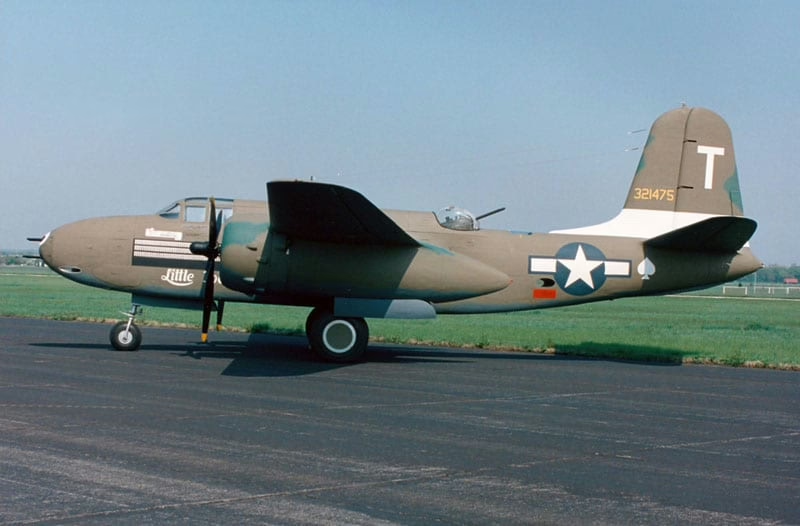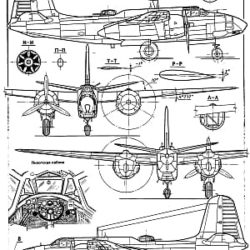Douglas A-20 Havoc History
The Douglas A-20 Havoc was the most widely produced attack aircraft operated by the Army Air Force. It was also the first aircraft to be flown by American crews in the European theatre.
The A20 was designed in 1937 to meet an Army specification for a new light bomber. It emerged as a twin-engine, shoulder-wing monoplane with retractable bicycle landing gear and a crew of three. As a bomber the A20 proved fast, was solidly built to withstand punishment, and possessed pleasant handling characteristics. The Douglas A-20 Havoc was 47 feet, 7 inches long with a wingspan of 61 feet, 4 inches. It had a gross takeoff weight of 20,711 pounds. Powered by two Wright R-2600-3 or -11 Cyclone radial engines producing 1,600 hp, it had a maximum speed of 347 mph, a cruising speed of 295 mph, and a maximum ferry range of 1,000 miles. It had nine 0.30-caliber machine guns: four forward-firing in a fuselage blister, two in a flexible dorsal position, one in a ventral position, and two rear-firing guns in the engine nacelles. It had a maximum bombload of 1,600 pounds.
The Douglas A-20 Havoc prototype first flew in 1938, but due to budget constraints U.S. Army Air Corps officials decided not to purchase the aircraft. French officials had no such hesitation. In 1939, they ordered 270 of what was now designated the DB7. Belgium also ordered an unspecified number. These bombers served with distinction with the Armée de l’Air during the German invasion in May 1940. When France fell, numerous DB7s were turned over to the British, who christened them Bostons and deployed them in North Africa against the German Afrika Korps. In August 1942 several American crews flying borrowed British planes participated in the first American raid over Europe.
The Army Air Corps acquired an initial batch of 206 A20s in 1940, and several were present during the Japanese attack on Pearl Harbor. As the war progressed, the versatile Douglas A-20 Havoc was deployed in numerous attack versions. Foremost among them was the numerous Model G, which featured a solid nose housing six machine guns for strafing work. A20s in the southwestern Pacific also pioneered the art of low-level skip-bombing against Japanese shipping with great effect. Another important design was the P70, the first American night fighter.
By war’s end, no less than 7,385 Douglas A-20 Havoc bombers had been manufactured. Of these, no less than 3,125 were given to the Soviet Union, with others serving in the air forces of Australia, Brazil, the Netherlands, and South Africa. The aircraft proved to be an outstanding light bomber of World War II. More A-20s were built than any other attack-designated aircraft to serve in World War II.
Douglas A-20 Havoc Specifications
| Aircraft Type: |
| bomber |
| Dimensions: |
| wingspan: 61 ft, 4 in |
| length: 45 ft, 11 in |
| height: 17 ft, 7 in |
| Weights: |
| empty: 11,400 lb |
| gross: 27,200 lb |
| Power plant: |
| 2 × 1,700 hp Wright Double Cyclone GR-2600 radial engines |
| Performance: |
| maximum speed: 351 mph |
| ceiling: 25,300 ft |
| maximum range: 1,000 mi |
| Armament: |
| 8 × 0.50 in calibre machine guns |
| 4,000 lb of bombs |
| Service dates: |
| 1940–1945 |










